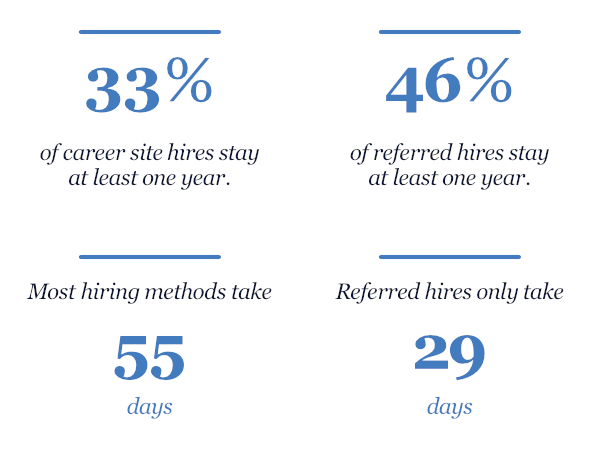Onboarding Impacts Employee Engagement, Retention, Recruiting, and Company Culture
When crafting your organization’s onboarding experience, remember the old adage: “You never get a second chance to make a first impression.”
Onboarding is often a new hire’s first real impression of what it will be like to work at an organization. The process sets the tone for the remainder of the employee life cycle and will be the basis of the employee-manager relationship. Although it is an important process, company spending on onboarding and training programs has steadily declined since 2021.(1)
In 2025, leaders should ask themselves, “what is the first impression I want this company to make?”
What is Onboarding?
Onboarding is the process organizations use to integrate new employees into the business. Onboarding should communicate to a new hire their role requirements, the processes and procedures, and the company culture.
Gallup lists onboarding as the third step in the employee experience, saying it is where new employees should experience the company’s values and purpose.(2) Good onboarding should answer the new hire’s question of “did I make the right decision?”
Onboarding has immense benefits. Deloitte wrote that employees who participated in effective onboarding are “18 times more likely to feel highly committed to their organization” and nearly 70% “more likely to stay with a company for three years.”(3)
Two Statista surveys found that 1.) following the onboarding process, 70% of respondents had a “positive attitude toward the employer” and increased engagement.(4) 2.) After onboarding, nearly two thirds of new hires felt welcomed, valued, and that they became more productive quicker. Over 70% felt prepared to do their job and like they understood their role responsibilities.(5)
Successful onboarding lays the foundation for long-term employee engagement. When interacting with a rapidly disconnected workforce, onboarding can be leaders’ number-one tool for producing higher levels of engagement.
Onboarding as a Tool for Recruiting
A good onboarding program can be used as a tool for recruitment. Nearly 90% of job seekers will research a company’s reviews and ratings before applying to a position.(6) Organizations with excellent onboarding programs not only gain a reputation for investing in their employees, but also become more competitive options for desirable candidates.
Tip: Talk about your company’s onboarding program during interviews. Share what the first 90 days look like for new hires. A strong onboarding experience will set your company apart.
Source: Linkedin Talent Solutions (PDF) - 5 Reasons Why Employee Referrals Matter to Small to Mid-sized Businesses
Happy employees refer their friends to work at your company. LinkedIn’s recruiting research found that employee referrals have the highest return on investment compared to all other recruiting methods. Referred employees are cheaper to hire than traditional hires, are hired faster, and stay with the company for longer. Not only that, but strong performers tend to refer other strong performers.(7)
A Manager’s Role in Onboarding
New Harvard Business Review research found that new hires were 3.5 times more likely to be pleased with their onboarding experience if their manager was actively involved.(8) Previous workplace norms dictated that HR alone would oversee onboarding activities, but the research is clear: managers should handle onboarding.
Recent hires want their direct supervisors to track their performance, establish milestones, and give feedback. They want supervisors to provide structure. Unavailable, uninvolved, and uninformative managers can have a dismal impact on an employee’s perception of the company and ultimately on their organizational commitment. In an analysis of onboarding and the employee lifecycle, Gallup found that managers are responsible for 70% of a staff member’s engagement.(9)
Managers who want to take ownership of the onboarding process but currently have too many other tasks can start small. A simple call before a new hire’s first day saying, “this is where to park” or “sign in at this desk” or “we are excited you’re joining our team” can be all that it takes to make a strong first impression.
Contents of a Good Onboarding Program
Gallup found that only 12% of workers strongly agree that their company does a great job at onboarding.(10) With such few companies providing exceptional onboarding, organizations that do gain a competitive edge.
Here is how to create a stellar onboarding program:
Your onboarding program likely needs to be longer. In 2018, nearly 40% of onboarding programs in the United States were limited to the first day or week of a new hire’s position(11), much shorter than the 30 - 90 days HR professionals suggest.(12) One day of onboarding does not positively impact retention, with only 4% of new employees deciding if they will stay with a company on their first day.(13) If your company’s onboarding only lasts a day, it’s too short.
Define the role’s requirements: Onboarding should be used to provide clarity to the newcomer regarding their role. Be specific. Answer the new hire’s question, “how do I contribute to this company?”
Provide feedback: A manager’s feedback should be actionable and measurable. Leaders should outline what success looks like and how to achieve it. Onboarding is an opportunity to establish trust and connection, and managers who give a kind, supportive, and honest assessment during the process set the stage for employees to perform well.
Company Culture: Sharing your company’s culture is a critical aspect to the success of the onboarding process. During this part of onboarding, leaders share the norms and values of the organization, which can include the expectation of high engagement.
Tip: Boris Groysberg, a professor and writer for Harvard Business School, suggests that during onboarding leaders should assign a mentor to new hires, someone who is a “veteran of the company and a ‘culture carrier’”.(14)
HBR found that when onboarding includes these elements, new hires are up to four times “more likely to contribute to their team’s success during the first 90 days.”(15)
Onboarding’s Opposite (Off-boarding)
Your company’s culture should be as proudly displayed in offboarding as it was in onboarding. Leaders should consider: when an employee leaves, what should their final impression be?
A thoughtful offboarding experience should consider the “peak-end rule”. The “peak-end rule” is a theory that suggests people remember the most intense moments of their experiences rather than the typical day-to-day.(16) For managers, this means that even if their employee’s experience with the company was largely positive, a highly emotional and negative conclusion can destroy previous good relations.
Ex-employees that end their tenure on a positive note can remain a productive investment for a company. They spread positive messages that boost the company’s reputation, they continue to send customers, and they refer their friends and colleagues as potential staff members. A kind goodbye allows for a continued relationship, and companies that provide a seamless offboarding experience may even benefit from boomerang hires, who are ex-employees that decide to return.
Offboarding should say “thank you”, and “let’s stay in touch” and it should acknowledge the employee’s accomplishments. The offboarding process deserves as much attention as onboarding, and companies that create a plan for an employee’s eventual departure will reap the rewards of their preparation.
Good Onboarding is Always Worth The Price
Leaders must make strategic decisions with company money. Even when budgets tighten and spending becomes more and more scrutinized, decision makers should continue to invest in strong onboarding programs. The cost is justified by onboarding’s undeniable and positive impact on recruiting, retention, employee engagement, and maintaining the company’s culture.
RELATED CONTENT:
[ 2 min. read ] Building a Strengths-Based Organization →
[ 14 min. read ] Leading a Hybrid Workplace: A Case for the Extreme Importance of Soft Skills →
Citations:
(1) Raphael Bohne, “Total Expenditure on Training Staff Payroll in the United States from 2012 to 2024 (in Billion U.S. Dollars),” Statista, June 24, 2025, https://www-statista-com.uccs.idm.oclc.org/statistics/788536/training-expenditures-united-states-training-staff-payroll/
(2) Gallup, “How To Improve the Employee Experience,” Gallup.com, November 13, 2020, https://www.gallup.com/workplace/323573/employee-experience-and-workplace-culture.aspx
(3) Victor Reyes et al., “New Hire Onboarding,” Deloitte, January 30, 2023, https://www.deloitte.com/us/en/services/consulting/blogs/human-capital/new-hire-onboarding.html
(4) Statista, “Importance of People Onboarding Worldwide in 2018, by Reason,” Statista, June 23, 2025, https://www-statista-com.uccs.idm.oclc.org/statistics/950123/importance-of-onboarding-worldwide/
(5) Raphael Bohne, How do new hires feel about onboarding?, July 9, 2025, https://www-statista-com.uccs.idm.oclc.org/statistics/1026304/onboarding-new-hires-feelings-united-states/
(6) Victor Reyes et al., “New Hire Onboarding,” Deloitte, January 30, 2023, https://www.deloitte.com/us/en/services/consulting/blogs/human-capital/new-hire-onboarding.html
(7) “Reasons Why Employee Referrals Matter to Small to Mid-Sized Businesses,” LinkedIn, July 15, 2016, https://business.linkedin.com/content/dam/me/business/en-us/talent-solutions/resources/pdfs/new_employee_referral_programs_FINAL.pdf
(8) Dawn Klinghoffer, Karen Kocher, and Natalie Luna, “Onboarding New Employees in a Hybrid Workplace,” Harvard Business Review, June 5, 2024, https://hbr.org/2024/06/onboarding-new-employees-in-a-hybrid-workplace
(9) Gallup, “How To Improve the Employee Experience,” Gallup.com, November 13, 2020, https://www.gallup.com/workplace/323573/employee-experience-and-workplace-culture.aspx
(10) Gallup, “Why the Onboarding Experience Is Key for Retention,” Gallup.com, May 16, 2018, https://www.gallup.com/workplace/235121/why-onboarding-experience-key-retention.aspx
(11) Raphael Bohne, “Typical Length of Onboarding Programs Worldwide in 2018, by Region,” Statista, July 11, 2025, https://www-statista-com.uccs.idm.oclc.org/statistics/951359/onboarding-program-typical-length-worldwide-region/
(12) Raphael Bohne, “How Long HR Practitioners Worldwide Believe Onboarding Should Last for in 2018,” Statista, July 11, 2025, https://www-statista-com.uccs.idm.oclc.org/statistics/950165/hr-opinion-on-length-onboarding-worldwide/
(13) John Sullivan, “Extreme Onboarding: How to Wow Your New Hires Rather than Numb Them,” LinkedIn, July 15, 2015, https://www.linkedin.com/business/talent/blog/talent-management/wow-new-hires-with-extreme-onboarding
(14) Boris Groysberg, “How Remote Work Changes What We Think about Onboarding: Working Knowledge,” Harvard Business School, April 27, 2020, https://www.library.hbs.edu/working-knowledge/how-remote-work-changes-what-we-think-about-onboarding
(15) Dawn Klinghoffer, Karen Kocher, and Natalie Luna, “Onboarding New Employees in a Hybrid Workplace,” Harvard Business Review, June 5, 2024, https://hbr.org/2024/06/onboarding-new-employees-in-a-hybrid-workplace
(16) Balca Alaybek et al., “All’s Well That Ends (and Peaks) Well? A Meta-Analysis of the Peak-End Rule and Duration Neglect,” Organizational Behavior and Human Decision Processes 170 (May 2022): 104149, https://doi.org/10.1016/j.obhdp.2022.104149


